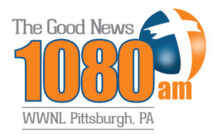The term DX is an abbreviation for "long distance". Surprisingly, I hear stations from my location here on the east coast, from Canada to Cuba and as far West as Texas. When the extended 1620 to 1710 portion of the band was being developed, I logged a California station using a GE Super Radio. With the right antenna and pointed in the right direction, it's possible to log Bermuda. My location is Charleston WV which is about 300 miles inward of the East coast.
Sunday, July 28, 2024
Saturday, July 27, 2024
Simple Logging Program
These days, almost everyone carries a cell phone in their pocket and there are a number of programs which can be used to store data. I use a program called "Keep".
I store my radio data as such:
AM 650 WSM Nashville, TN 50,000 watts Country
2/28/21 @ 10:40 pm
AM 660 WFAN New York NY 50, 000 watts Sports
2/24/21 @ 11 PM
As such, it only takes a glance to see if I've previously heard a station etc.
Once a station is logged, a quick internet search provides volumes of information as to management, tower location etc.
AC or DC Power
Thursday, July 25, 2024
Cheap vs Expensive Receivers
My advice is not to spend a lot of money when starting out on any hobby. AM radio may not be your "cup of tea" so to speak. Some of the small transistor radios can give surprising results. I've been an Amazon Prime Member for years and I've collected several practically for free. Most have been under $30. One of my best is a Sangean SR-35 which I paid absolutely zero dollars for. (free) and. by the way, it's an analog receiver. The SR 35 doesn't have a logging scale on it but they get around this by adding a tuning "light".
The two most important things to consider on any receivers are Sensitivity and Selectivity. Sensitivity is the ability of a receiver to pull in weak signals. Selectivity is the ability of a receiver to reject adjacent frequencies.
Wednesday, July 24, 2024
Analog Verses Digital Receivers
While some AM radio listener's insist on digital receivers, it's quite possible to recognize (and there are even advantages) to using the simple logging scales found on almost all analog receivers. At night, those big 50,000 watt stations are easy reference marks to bump up against and hear the smaller 5,000 watt stations. True....it's much easier to physically ''look" at a "digital" readout and use one of several reference materials on the web to verify your choice but the same results can be accomplished by listening at the "top of the hour" station ID's 'and phone numbers of advertisers'. The zip codes and area codes are also important.
It's been long known that the orientation of the physical radio can null out strong stations allowing a weaker station to appear on the same frequency and using an external "loop" antenna can accomplish the same results.
WWNL 1080 Logo Pittsburgh, Pennsylvania

